This post may contains affiliate links. Read our full disclosure here.
Selecting the best blinds for your home’s style isn’t just about blocking out light or maintaining privacy. These window treatments are actually silent design heroes that can transform a room’s feel, add texture, and bring your design vision to life. The right blinds can make a small space feel larger, add warmth to a modern room, or bring a cohesive finishing touch to your carefully curated decor. Finding the perfect match for your home’s aesthetic might seem overwhelming with so many options available, but I promise it’s easier than you think!
Whether you’re starting from scratch with a new place or updating tired window treatments, choosing the best blinds for your home’s style comes down to understanding both form and function. As someone who spent way too many weekends agonizing over window treatments for my first house (and made some costly mistakes along the way!), I’ve learned that blinds aren’t just practical necessities—they’re design statements that deserve careful consideration. Let me guide you through finding window treatments that truly complement your unique style while addressing your practical needs.
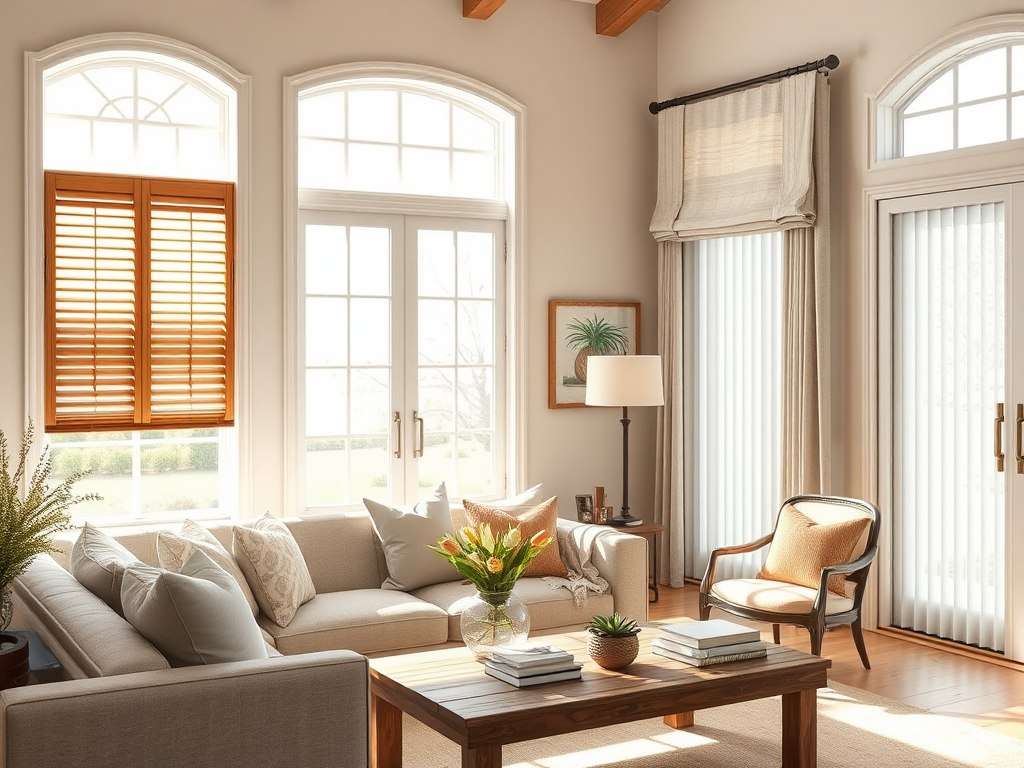
The Best Blinds for Your Home’s Style: Finding Your Perfect Match
Not all blinds are created equal, and different styles send different design messages. Matching the right blind to your decor can create a seamless look that feels intentional and polished. Let’s explore how different types of blinds pair with popular interior design styles to achieve that perfect harmony.
Wood blinds bring natural warmth and timeless appeal to any space. They’re particularly stunning in traditional, farmhouse, or rustic interiors where their organic texture complements wooden furniture and warm color palettes. The rich tones of real wood blinds ground a room and create a cozy, established feel—perfect for living rooms and home offices where you want that classic, enduring appeal.
Faux wood blinds offer the same aesthetic as real wood but with added practicality. Their moisture resistance makes them ideal for kitchens and bathrooms where humidity levels fluctuate. They’re a budget-friendly option that works beautifully in transitional spaces or modern farmhouse designs. The best part? They require minimal upkeep while still delivering that gorgeous wooden aesthetic you crave.
Roller blinds have clean, simple lines that disappear when fully raised, making them perfect for minimalist or contemporary spaces. Their unobtrusive profile works wonderfully in Scandinavian-inspired interiors or modern kitchens where simplicity reigns supreme. Available in countless colors and opacities, roller blinds can either blend seamlessly with your walls or make a bold statement—versatility at its finest!
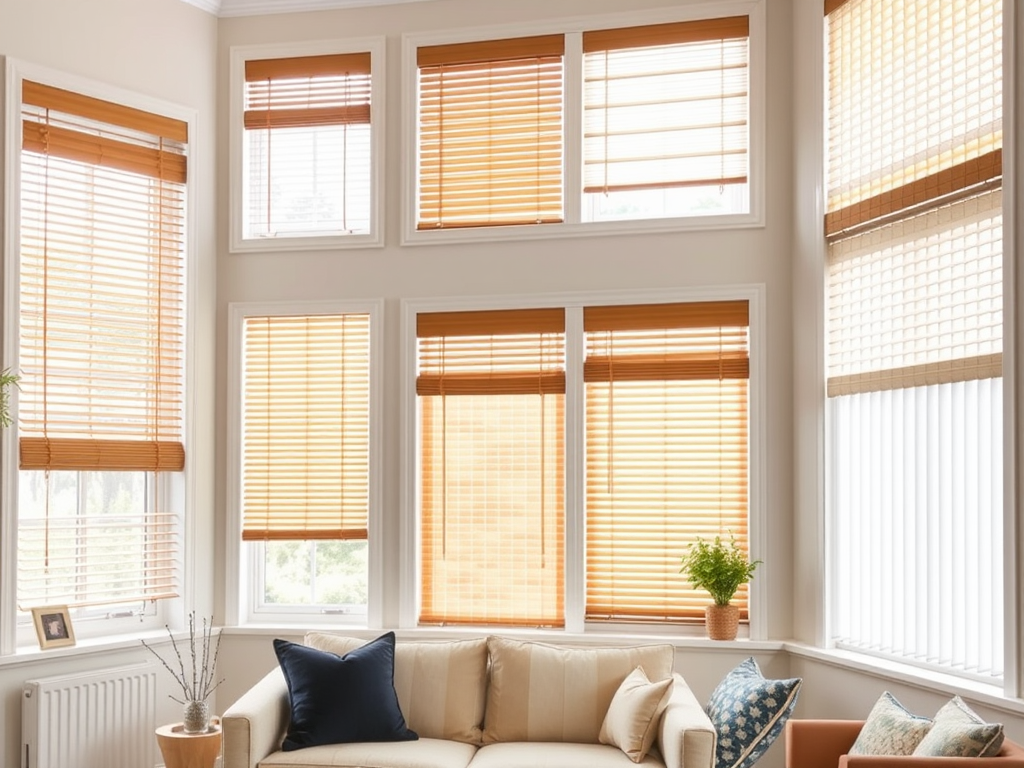
Matching Blinds to Room Function: Practical Solutions
Beyond style considerations, each room in your home has specific needs that your blinds should address. The best blinds for your home’s style will always balance beauty with functionality—especially when you consider how differently we use each space. Let me break down the practical blind solutions for each room type.
For kitchens, practicality should be your north star. This high-traffic, high-moisture area needs window treatments that can handle splashing water, food splatters, and temperature changes. Faux wood blinds and vinyl roller blinds are standout choices here because they’re easy to wipe clean and won’t warp with humidity. Cordless options add an extra layer of safety in this busy space, especially if you have little ones running around.
Bedrooms deserve window treatments that prioritize both comfort and style. Since quality sleep depends partly on light control, consider blackout or room-darkening options here. Roman shades and cellular shades excel in bedrooms—they provide excellent insulation against both light and noise while adding a soft, luxurious feel. For the ultimate cozy bedroom setup, layer your blinds with decorative curtains to create depth and dimension while maximizing light control.
Living rooms typically benefit from light-filtering blinds that balance privacy with natural illumination. These social spaces often feature the most visible windows in your home, so choosing options that complement your overall design is crucial. Wood blinds, Roman shades, or sheer roller blinds all work beautifully here, allowing you to adjust light levels throughout the day while maintaining your carefully curated aesthetic.

Color, Texture, and Material: Creating Harmonious Window Treatments
The color and texture of your blinds play a massive role in how they interact with your existing decor. The best blinds for your home’s style should either complement or intentionally contrast with your current palette—there’s no one-size-fits-all approach when it comes to creating visual harmony in your space.
Matching your blinds to your wall trim creates a seamless, built-in look that feels custom and intentional. This approach works particularly well in traditional or transitional spaces where you want a cohesive, polished appearance. For white-walled rooms, white or off-white blinds create an airy, expansive feel that makes windows appear larger while maintaining a consistent aesthetic throughout the space.
If you’re feeling more adventurous, using contrasting blind colors can create dramatic focal points that draw the eye. Navy blinds against white walls, for instance, create a bold graphic statement that feels decidedly modern. Just be sure your contrast color appears elsewhere in your room—perhaps in artwork or accessories—to create a thoughtfully designed space rather than a random pop of color.
Texture is another powerful element that often gets overlooked. Woven wood blinds add natural texture, linen-like Roman shades bring softness, and bamboo brings an organic, global-inspired element to your windows. These textural differences can add depth to monochromatic rooms or complement existing textural elements like woven rugs or rattan furniture. When I renovated my living room last year, switching from flat white blinds to textured natural shades made the entire space feel more layered and intentional.
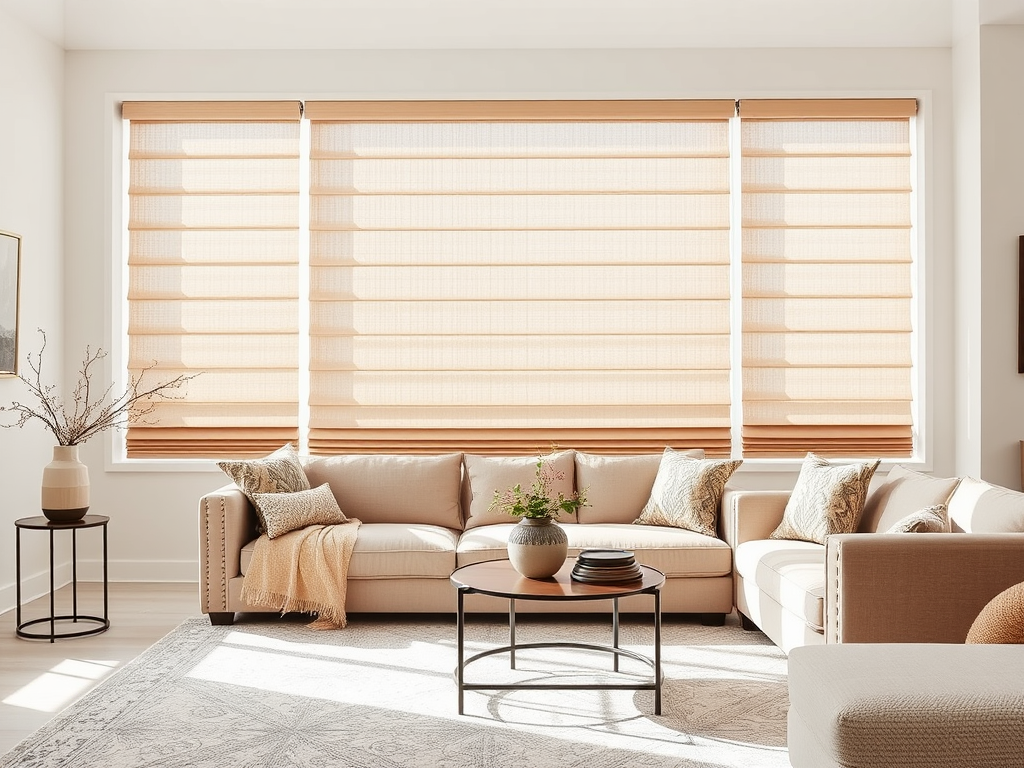
Common Blind Selection Mistakes (And How to Avoid Them)
Even design enthusiasts make window treatment missteps! After watching friends struggle with their blind choices (and making a few errors myself), I’ve compiled the most common mistakes people make when selecting the best blinds for their home’s style—and more importantly, how to sidestep these pitfalls.
Skipping precise measurements tops the list of blind-buying blunders. Each window in your home is unique—even those that appear identical often have subtle variations in size. Always measure each window individually (width and height) before ordering, and follow the manufacturer’s specific measuring guidelines. Nothing looks worse than blinds that are too short, too narrow, or improperly fitted—they scream “afterthought” rather than “thoughtful design element.”
Another common error is choosing blinds based solely on aesthetics without considering functionality. That gorgeous velvet Roman shade might look stunning in your Pinterest-inspired bathroom vision, but how will it handle daily steam and moisture? Before committing to any window treatment, ask yourself practical questions about privacy needs, light control requirements, and cleaning ease. The best blinds for your home’s style must balance beauty with real-world function.
Many homeowners also forget to consider how their blinds will look from outside the home. This oversight can lead to a mismatched exterior appearance that affects curb appeal. Try to maintain some consistency in the style or color of window treatments visible from the street—this doesn’t mean every window needs identical blinds, but a cohesive approach will create a more harmonious exterior impression.
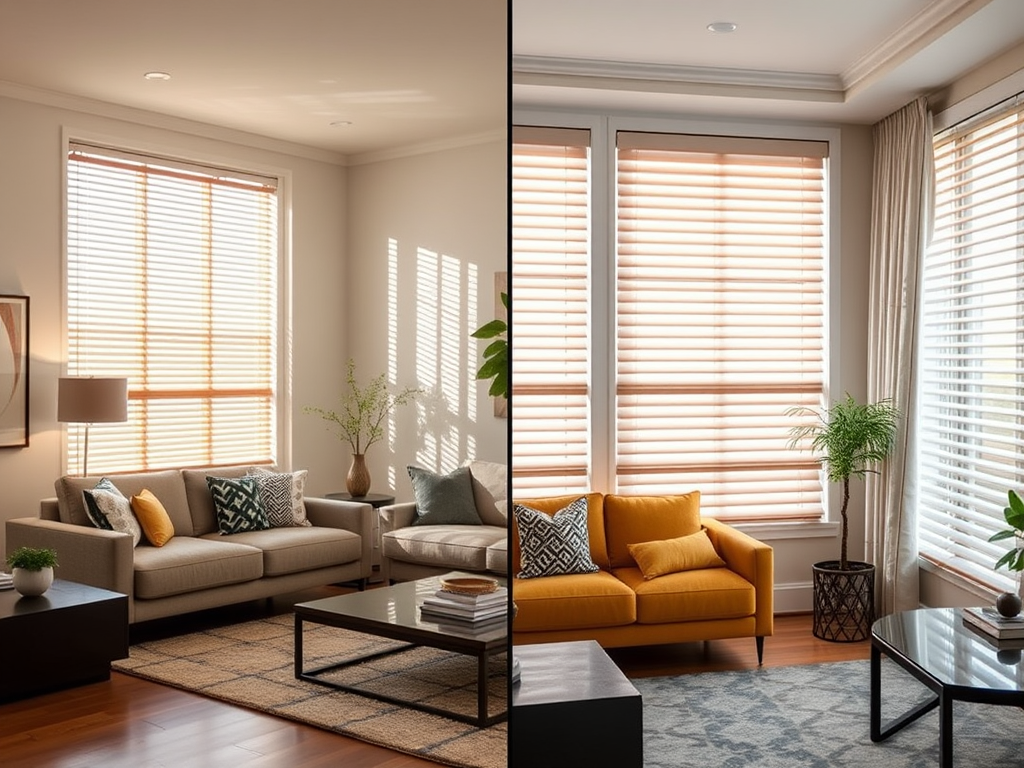
The Perfect Blinds for Different Design Aesthetics
Getting the best blinds for your home’s style often comes down to understanding which window treatments naturally complement different design aesthetics. After helping my boyfriend choose blinds for his industrial loft and my sister select options for her coastal cottage, I’ve seen firsthand how the right window treatment can elevate any style.
Modern and contemporary homes thrive with clean-lined options like roller or vertical blinds. These sleek, unfussy window treatments complement the minimalist vibe of modern spaces while maintaining function. Opt for neutral tones or colors that match your walls for a seamless look, or choose blinds with subtle textural interest to prevent the space from feeling flat or sterile. Many modern homeowners are now exploring motorized options that integrate with smart home systems—the ultimate in contemporary convenience.
Farmhouse and rustic interiors naturally pair with wood or faux wood blinds that highlight warm, natural materials. These spaces benefit from the authenticity and texture that wooden elements bring, creating a cozy, welcoming atmosphere. White or cream faux wood blinds work beautifully with white trim in modern farmhouse spaces, while darker wood tones complement more traditional rustic decor. The horizontal lines of these blinds also provide a nice counterpoint to vertical shiplap or beadboard often found in farmhouse-style rooms.
For bohemian or eclectic spaces, layered window treatments create that collected, personalized feel that defines these free-spirited styles. Consider combining roller blinds with decorative curtains for maximum texture and personality. Woven wood or bamboo shades also work beautifully in boho spaces, adding natural texture while filtering light in a warm, inviting way. The irregularities and organic patterns in these natural materials complement the collected, global vibe that makes bohemian spaces so inviting.
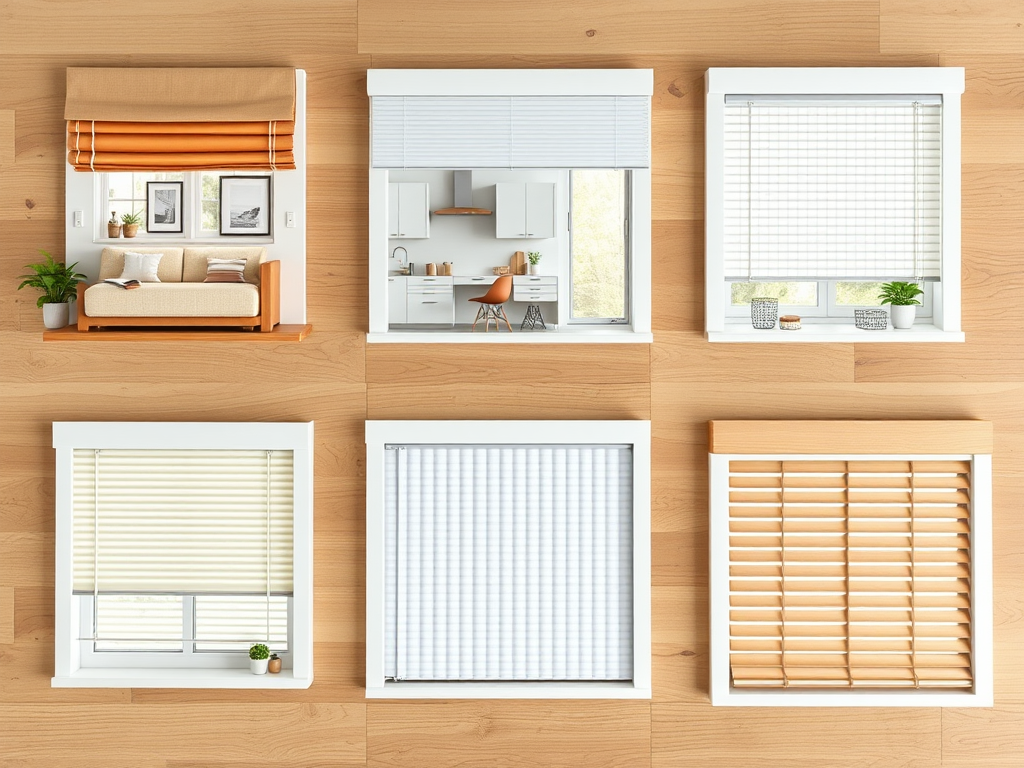
Quick Reference Guide: Matching Blinds to Room Styles
Finding the best blinds for your home’s style doesn’t need to be complicated! This quick reference guide matches popular room styles with their ideal blind partners, helping you narrow down your options without the overwhelm.
| Room Style | Best Blind Type | Key Feature |
|---|---|---|
| Modern | Roller, Vertical | Clean lines, neutral tones |
| Farmhouse | Wood, Faux Wood | Warm, natural texture |
| Coastal | Woven Wood, Roman | Breezy, light-filtering |
| Boho | Roller + Curtain Layering | Mix of patterns + texture |
| Traditional | Wood, Roman Shades | Classic, tailored appearance |
| Minimalist | Roller, Panel | Unobtrusive, blends with walls |
| Industrial | Metal, Vertical | Raw materials, functional feel |
For small spaces, light-colored blinds that match your wall color create a seamless, expansive feel that won’t visually clutter your windows. Rooms with spectacular views benefit from blinds that fully disappear when open, like roller styles or top-down/bottom-up options that maintain privacy while preserving your vista.
Budget considerations matter too! While custom wooden blinds might be the dream, many manufacturers now offer budget-friendly alternatives that mimic high-end looks. Faux wood provides the classic appeal of real wood at a fraction of the cost, while still delivering durability and style. For temporary spaces like rentals, consider ready-made options from retailers like IKEA, Target, or Wayfair—you’ll find surprisingly stylish choices that won’t break the bank.
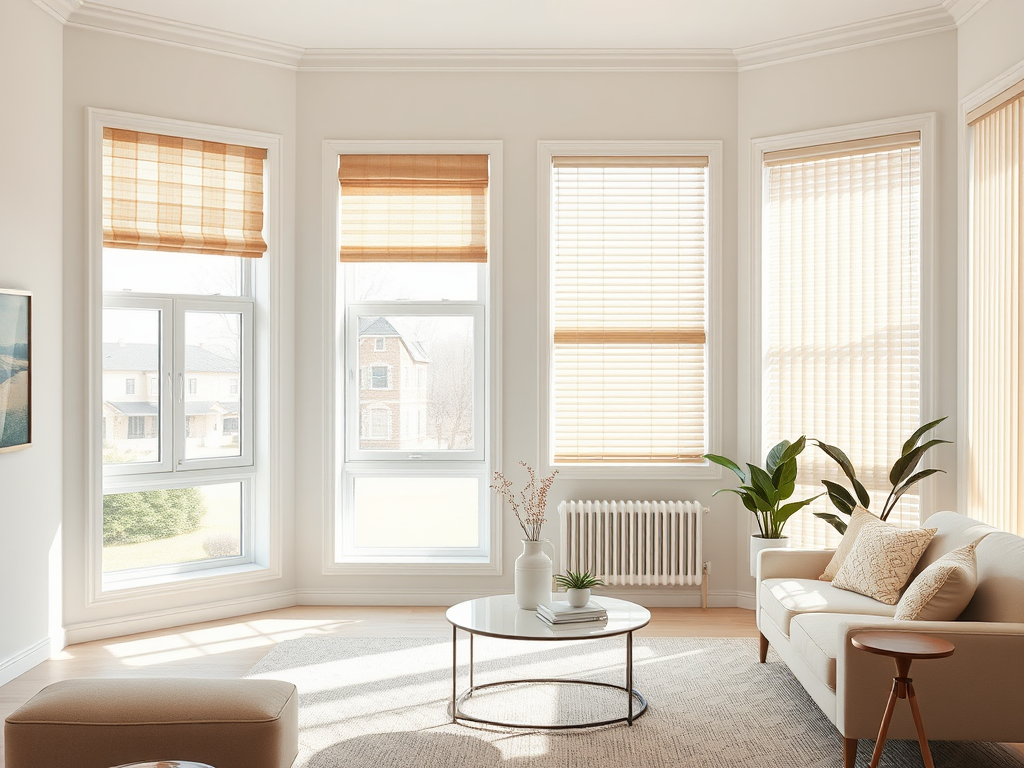
Beyond Basics: Creative Blind Solutions
Once you understand the fundamentals of choosing the best blinds for your home’s style, you can start exploring some more creative approaches. These innovative solutions can address unique window configurations or add unexpected design elements to your space.
Awkward windows like skylights, arched tops, or extra-large picture windows often present challenges with standard blinds. Fortunately, many manufacturers now offer custom solutions specifically designed for these tricky situations. Cellular shades work wonderfully for skylights thanks to their lightweight, insulating construction, while specially designed arch toppers can complement standard blinds on windows with curved tops.
Up to 50% OffSmart blinds represent the cutting edge of window treatment technology, allowing you to program your blinds to adjust throughout the day based on sunlight, temperature, or time. While slightly pricier than standard options, these high-tech treatments add convenience and can even contribute to energy savings by optimizing natural light and insulation. Some systems integrate with smart home assistants like Alexa or Google Home, allowing for voice control—perfect for those hard-to-reach windows!
Don’t underestimate the impact of layering different window treatments for maximum effect. Combining blinds with curtains or drapes creates depth and allows for greater light customization. For instance, light-filtering cellular shades paired with blackout curtains give you complete flexibility—use the shades alone for daytime privacy and filtered light, then add the curtains at night for total darkness and extra insulation.
Looking for something truly unique? Consider decorative film in conjunction with simple blinds. This allows light to filter through beautiful patterns while maintaining privacy, all while complementing minimalist blind styles. This approach works particularly well in bathrooms or street-facing windows where you need constant privacy without sacrificing natural light.
Finding Your Perfect Window Match
Choosing the best blinds for your home’s style ultimately comes down to balancing personal preference, practical needs, and design coherence. The window treatments you select should complement your space while addressing light control, privacy requirements, and maintenance considerations. Remember that windows are literally the eyes of your home—they deserve treatments that honor both their functional importance and design potential.
Don’t rush the decision process! Order samples whenever possible to see how different materials and colors look in your actual space under varying lighting conditions. What looks perfect in a showroom might read completely differently in your north-facing living room or south-facing kitchen with its specific light quality and existing color palette.
Quality matters with window treatments—they’re operated frequently and exposed to sunlight daily. While budget options certainly have their place, investing in well-made blinds for your most-used spaces will save you money and frustration in the long run. Better constructed blinds operate more smoothly, last longer, and simply look more refined than their cheaper counterparts.
The best blinds for your home’s style are the ones that make you smile every time you adjust them. They should feel like a natural extension of your design vision rather than an afterthought or compromise. With careful consideration of both aesthetics and function, you’ll find window treatments that truly enhance your space and daily living experience for years to come. What window treatment project are you tackling next? Is it time to finally replace those builder-grade mini blinds with something that truly reflects your personal style?




